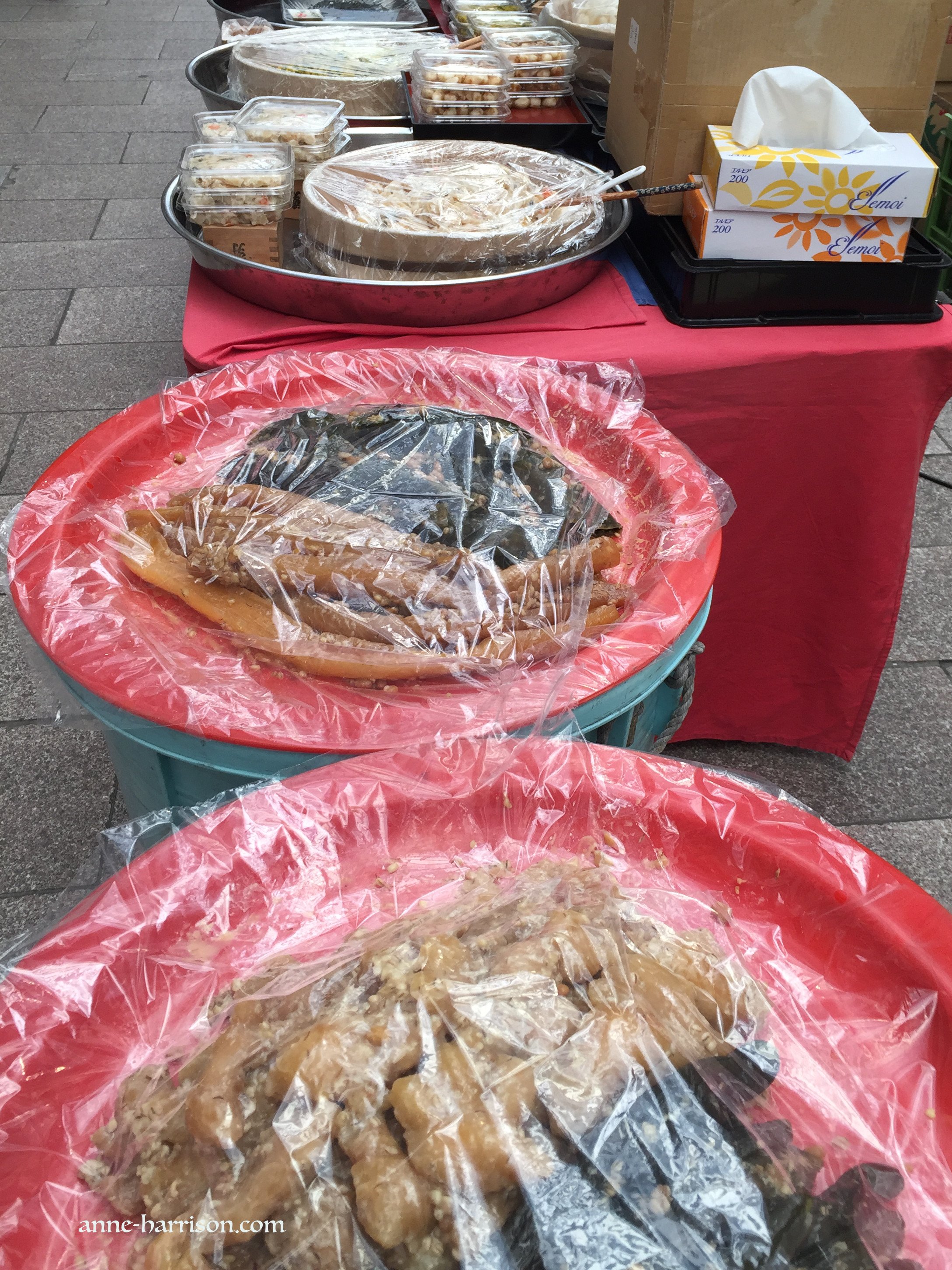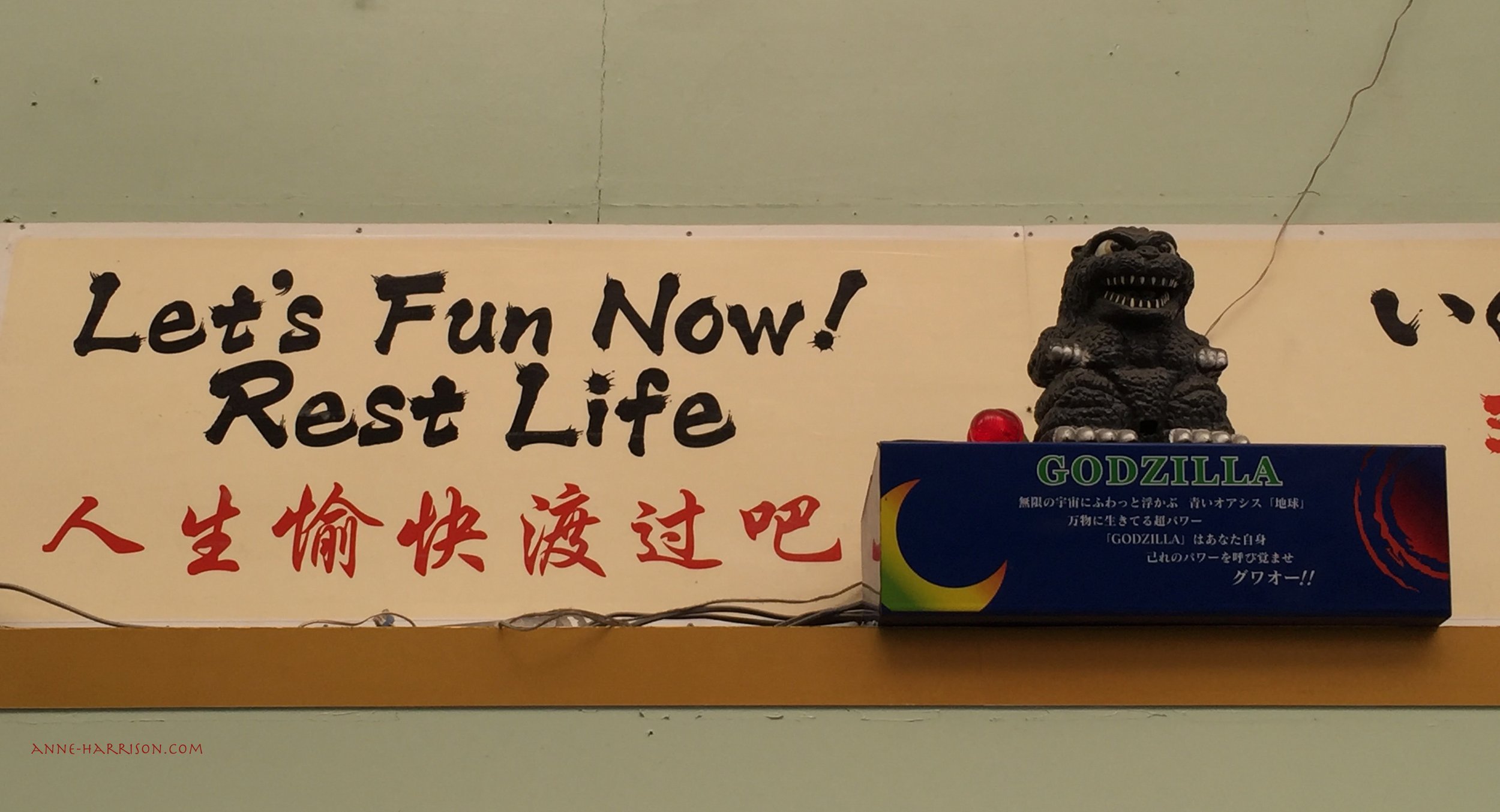Why I loved Nagasaki
Possibly because I had little idea what to expect.
Greetings at the port © A. Harrison
I rarely do tours. I prefer organising a trip myself, learning all the details of a place, from its history to how to actually get there, what food to buy in the markets, what poets and writers and artists have come from or created their works here.
In a sense, I then feel I own wherever my feet may lead me next. On a tour, with everything organised, one place starts blending into another. I can’t distinguish them by remembering what I didn’t know and discovering things on my own, such as not knowing what bus stop I needed in Corfu, or stumbling across a trattoria filled with uni students where I had one of my best meals in Florence.
When travelling with my elderly mother however, a cruise around Japan proved ideal. She simply had to unpack just the once, had the same room the entire trip, found different people to meet and talk with every day, and could easily to stay on board should she not feel like an adventure that day… As proved the case in Nagasaki.
So, leaving Mum being fussed over by the steward in the ship’s library (we came back to find them singing duets at the bar), my hubby and I caught a taxi from the port into town.
Deer motives are everywhere in the town; a stall getting ready for the lunchtime hordes © A. Harrison
I also love catching taxis in a foreign place. The drivers open my eyes to a new world. In New York I once caught a taxi where the driver was an off duty cop earning a little extra cash; in Singapore, my driver possessed both perfectly manicured eyebrows and English with an extensive knowledge of Far East politics.
In Nagasaki our driver — an elderly, dapper man — spoke no English but nodded enthusiastically on showing him our destination on a map. I swear he took detours just to show us the sights, including the Spectacle Bridge, which stretches over the river in an elegant double arch. Dating to 1634, it is Japan’s oldest arched bridge. When the water is still, the bridge’s reflection looks like a pair of old-fashioned spectacles.
After dropping us off, the gorgeous man circled around the block to make sure we’d found the right place, a special knife shop. Japanese knives are in a world of their own, and this shop sold exquisite hand-made knives which are simply an honour to cook with. The shopkeeper happily displayed knife after knife simply for us to appreciate the craftsmanship. Each was a work of art; choosing just one was a Herculean task.
A ‘mall’ with street signs at the far end © A. Harrison
Eventually he chose and we wandered outside. The streets in this part of town form a grid, with some being pedestrian only while others are open to traffic. A few were covered as if in a mall, so it felt strange to be stopped by traffic lights as cars went past.
The shops sold everything, from second-hand kimonos to whale meat. (Re-cycled shops are a bargain in Japan, for traditionally most Japanese won’t wear clothes that once belonged to someone else. Consequently I found exquisite kimonos and haori for as little as 20 Australian dollars, whereas to buy one new can run to hundreds if not thousands of dollars.)
With lunch time approaching, tantalising smells from the stalls selling food competed with the restaurants (many of which already had long queues).
Later on I set out to explore further. I was aiming for Chinatown (when have I ever found a boring Chinatown?) but became side-tracked by the walk to Glover Park. The streets were packed; it seemed the whole city was out enjoying the sunshine. It was both the weekend and the start of Golden Week, which culminates in Children’s Day. Colourful kites filled the sky and the streets were so vibrant and festive it’s easy to forget an atomic bomb was dropped here on the 9th August 1945.
A few images from my few hours on shore © A. Harrison
Glover Garden is on a rise of land overlooking the harbour. When the Portuguese and Dutch arrived in 1571, Nagasaki rapidly became a city of traders. Between 1648 and 1854 only the Dutch were allowed to trade. The Shogunate restricted the Dutch to an area called the Dejima, where, like the start of a bad joke, the only people allowed to enter were traders, monks collecting alms, and prostitutes.
When Nagasaki finally reopened to the West an influx of foreigners followed and many settled in this area. Glover House is one of the houses built at the time, and the gardens were both the inspiration and setting for Puccini’s Madame Butterfly.
I had only a few hours, but I loved Nagasaki. Unlike Tokyo I didn’t need a postgraduate degree to read the subway map; it also lacked the crowds of tourists flooding Kyoto. I’ll come back one day and simply walk, and discover all those other sights I missed. Which is another reason I don’t like tours, for had we arrived on our own, we would have stayed far longer. Instead, we sailed off into the sunset.
Godzilla says it all! © A. Harrison
The Literary Traveller
A classic of Japanese literature, The Tale of the Genji dates from the peak of the Heian Period. It was written in the 11th C by a Japanese noble woman, Murasaki Shikibu, who was also a lady-in-waiting. Depicting the lifestyle of the upper echelons of the Japanese feudal system, TheTale of the Genji is also considered the first psychological novel.
The work revolves around the life of the Shining Genji, son of the emperor, and his favourite concubine Lady Kiritsubo.
The novel revolves largely around the art of seduction – Genji marries his first wife at the age of twelve. In an era when style and aesthetics were more highly rated than morality and substance, the high-born seem to do little else than write poetry to their lovers, and even emperors are often ignorant of their true fathers. To be beautiful, or poetic, or excel at calligraphy, was seen as a reflection of inner goodness, both in this life and previous ones.
In The Tale of the Genji Murasaki Shikibu captures the life of 11th century Japan while describing humanity in all its shades and vulnerabilities. Ten centuries later I fell under her spell.
Enjoy my writing? Please subscribe here to follow my blog. Or perhaps you’d like to buy me a coffee? (Or a pony?)
If you like my photos please click either here or on the link in my header to buy (or simply browse) my photos. Or else, please click here to buy either my poetry or novel ebooks. I even have a YouTube channel. Thank you!
Plus, this post may contain affiliate links, from which I (potentially) earn a small commission.










